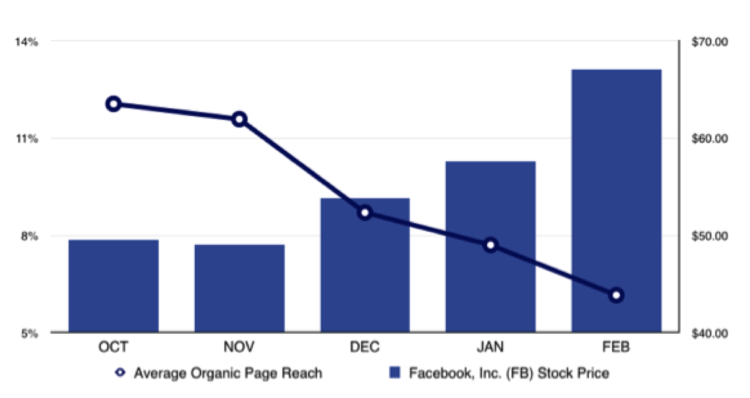Things move fast in the digital travel marketing world. We need to evolve and stay abreast of changes and coming trends. With this fresh new year just beginning, here’s my humble take on the ABCs of etourism and what travel marketers should consider in 2014.
A – Analytics
For many people, this comes last or perhaps even as an after-thought. Yet, it has become increasingly easy and convenient to gather data from various campaigns and actions, from Google Analytics to Facebook analytics, not to mentions reports available on third-party sites such as Hootsuite, for example.
Despite Einstein’s quote, savvy managers will need to have key performance indicators in place, so that measurement can take place and analytics allow for tweakings along the way to improve ongoing campaigns.
B – Blogging
In the world where content is king, corporate blogging remains of utmost importance in order for brands to churn out quality stories, testimonials, answer queries or frequently asked questions, explain products and services and so on.
As owned media, a blog is home turf where you can change look & feel, add videos or photos at will, or have guest posts and spin that content through social media and newsletters managed internally. In fact, blogging was identified clearly among upcoming trends for marketers during the first edition of Social Media Marketing World, in San Diego last year.
C – Connected
Connected clients, or the “always-on” generation makes for a kind of traveler that now expects free wifi at destination and in hotel rooms, above other considerations such as free breakfast, or access to a gym. Most airports provide wifi access, with many going down the free route, while airlines now offer more and more wifi options onboard.
Rail and bus carriers are coming along, as are most accommodations. How long until we have a seamless wifi experience across a destination when traveling?
D – Destinations
DMO or DMMO? Whether known as Destination Marketing Organizations or Destination Management & Marketing Organizations, the future DMO plays a key role in the etourism experience, from aspirational sites online to booking options to on-site queries answered via mobile platforms, in real-time.
A tectonic shift from the old model, with stale information centers, yet a shift most are embracing if they wish to survive and compete in an increasingly busy and competitive worldwide landscape. Read: The evolving role of the transactional DMO
E – Engagement
This catch-all word remains elusive for many, yet it is perhaps the most important marker of a brand’s online success. Having so many followers or fans is one thing, having them interact and engage with your content is another.
And this is what etourism should be about: how do you get travelers to share your content before, during and after their trip, thus spreading the word about your product or destination within their respective networks, yielding virality and reach along the way.
F – Facebook
Still the dominant player in the social media world, Facebook boasts more than 1.26 billion active users, with over 78% accessing their account via mobile devices, and an average session time of 20 minutes! 58% of users connect daily with their account.
If that’s not a sticky site, I don’t know what is. Having said that, there are many red lights showing signs of Facebook fatigue, particularly with teenagers and younger crowds, and small & medium businesses will reconsider their efforts if they must pay every time they wish to communicate with their community, as will be the case in the future. Read: What role for Facebook in the online travel landscape?
G – Google
Google Search, Google AdWords, YouTube, Google+, Google Now, Google Wallet, Google Flight Search, Google Hotel Finder, Google Places… Well, you get the picture. You may want to read again How Google Plans To Dominate the Travel Sphere.
H – Hashtags
Once the differentiator for Twitter and the twitterverse, hashtag craze has caught on and is now the de facto way to identify keywords on social media, from Google+ to Instagram, Pinterest and yes, even Facebook.
Using hashtags for events is a great way to track community conversation, not to mention competitive eavesdropping or content curation, which are all simplified when using relevant hashtags for your brand, region or industry.
I – Instagram
Since its purchase by Facebook back in April 2012, the mobile native application has grown from 25 to 140 million active users and counting.
Photo-sharing is all the rage, and since Instagram introduced its 15-seconds video feature in 2013, it’s now eating away at Vine‘s lunch in the ever-popular video and micro-video segments where more and more travel marketers will need to focus in 2014 and beyond!
J – Justify
A key challenge that remains is to justify the efforts put into social media tactics. How do you measure return on investment if you don’t have proper goals, clearly identified from the get-go?
Marketers consistently identify “measuring ROI” as one of the most difficult tasks in various reports published in past years. Ensuring buy-in at all levels, specially senior management, is of utmost importance in this context.
K – Klout
Influence marketing has always been around, with celebrities endorsing products for example. Nowadays, niche bloggers or experts in a given field can exercize huge influence within their networks that often exceed the traditional reach of mainstream media.
Klout, Kred or PeerIndex or examples of sites that measure the given influence, according to specific topics or social media, i.e. a food blogger particularly influential on Instagram. A useful tool for travel marketers, if and when used well and sparingly.
L – Linkedin
The professional network has been around for over 10 years now and remains an important player in the social media travel world, in particular for active players in the business to business realm. Discussion groups, when properly moderated, can be great sources of information for R&D.
And the site itself, with over 250 million active professional users, makes for great potential in lead acquisition and generation, with its powerful search engine based on our work relationships. A great way to find that tour operator product manager, or meeting planner in a given city…
M – Mobile
Mobile encompasses all devices used on the go, from wifi-enabled iPods or music playing devices to smartphones and, of course, tablets. And it the past two years, adoption rates have been mind-boggling!
Are destination sites, hotels, attractions or transportation sites adapted to this new reality? Is your marketing adapted, investing in mobile-only pay-per-click campaigns, or adapting your Facebook Ads approach accordingly? These are considerations that matter more than ever going forward.

N – Networking
Both offline and online, networking has never been more important and still needs to take place. Some folks thought business travel might linger and die due to new technologies allowing video-conferences and other similar virtual encounters.
Truth is, in-person meetings are as important as ever, but networking can begin online before a meeting in real life, and continue afterwards with social media and other tools at our disposal.
O – Objectives
I spoke of Analytics and Justification earlier on, but neither of these can take place if there aren’t agreed-upon objectives from the onset.
Measuring the ROI of social media and online marketing tactics is not just about sales, it can be about customer service issues resolved, R&D, human resources targets (candidates recruited, for example), awareness, reputation, and so on. Just make sure your goals are SMART. Read: The 7 Business Drivers of a Social Media Strategy
P – Pinterest
Ever since Pinterest came into the limelight, late 2011 and early 2012, travel marketers caught on to its potential, since image sharing plays such a key role in the aspiration and planning stages of the travel decision-making process.
This was confirmed by Pinterest, which noticed how much pinning and sharing was taking place on its numerous user boards, introducting Place Pins late in 2013.
Read: Pinterest and Travel: A Match Made in Social Media Heaven
Q – Q&A
Frequently Asked Questions (FAQ) are still few and far in-between on travel industry sites, which is a lost opportunity to inform potential travelers as much as possible before they ring your call center or go to a travel agent.
Savvy marketers use social media outlets to survey clients about upcoming new products or services, conducting real-time research and development while getting feedback about travelers about salient issues or possible improvements that are often low-hanging fruits.
R – Responsive (or Real-Time)

With mobile becoming unavoidable, having a mobile-optimized website is no longer an option but an obligation.
Better yet, more and more travel industry stakeholders are opting for mobile-first sites when possible, or responsive web design, allowing for the same content to show up as efficiently no matter what device the user is reading it from.
No sub-brand version for the mobile site, but this demands some thinking about what needs to stay, what needs to go, since having evergreen content for everybody and nobody at once no longer cuts it.
S – Strategy
OK, so you have your objectives in place, you are measuring and analyzing your tactics on an ongoing basis. Everything cool? Well, yes, but only if these objectives relate to over-arching corporate goals and the strategic marketing plan your company should have in place.
Many campaigns work well, yet the brand has financial difficulties. Why? goals and objectives worked well in silo, but did not contribute to the financial success of the organization. Thus, having a strategy in place is key, making sure everything else trickles down rather than the other way around.
T – TripAdvisor
With its 260 million monthly visitors and over 100 million reviews, TripAdvisor is the reference for most travelers globally, validating choices but also influencing the decision-making before it takes place. Which is why the new TripConnect promises to be an interesting advertising options, in particular for smaller independent hotels.
TripAdvisor is also now offering meta-search capabilities, tapping into a growing trend as well, alongside Trivago and Kayak. In fact, I had identified TripAdvisor as one of the 5 travel marketing trends for 2014.
U – Unique
With so much content around and information overload looming, a cookie-cutter approach just won’t work anymore – did it ever, I wonder? Travel brands that try new things, while always keeping the customer at the center of priorities, are those who will be rewarded. Think Westjet’s Miracle Christmas video, think KLM’s twitter response time for customer service, or novel Instagram contests by restaurants and hotels putting their clients at the heart of the strategy.
And videos? Crowdsourcing ideas and footage to travelers is on the rise, as locals tend to have a different perspective on “selling” a destination that the average agency does, it seems.
V – Vine
V is also for videos, but it certainly seems like the shorter, the better. Micro-videos are the next frontier, as Vine has shown since stepping into the light with its 6-seconds maximum videos, allowing for creativity while satisfying those with a short attention span.
Instagram has hurt Vine’s adoption rates and growth since unveiling its video capabilities, but Vine still stands strong in particular with younger 12-25 year-olds also avid of Snapchat and other messaging services.
W – Wifi
When catering to international travelers, providing wifi services is more than a nice-to-have feature, as roaming fees keep deterring many from using their mobile devices while on the road.
Sure, there are ways to go around, with an unlocked device and getting a SIM card from a local telecom provider, but most people would prefer to simply use their smartphone or tablets without the hassle. Wifi is also a key feature when developing circuits, routes or trails, i.e. wine trails, hiking paths, multimedia museum visits, etc.
X – Xing
What, never heard of this leading social network in German-speaking countries, linking mostly business professionals? Don’t worry, there are many similar sites in various countries, in particular in emerging markets (Brazil, Russia, India) and China, where networks such as RenRen, QZone or Sina Weibo dominate. There’s more to social media than just Facebook, eh?
Y – Yelp
With over 100 million monthly visitors, particularly within North America, Yelp is a force to be reckoned with in the travel industry. Restaurants and local stores are most frequently reviewed by users of the site, who tend to be more vocal and critical than on TripAdvisor.
Nevertheless, hotels should also manage their presence on the site, since users pay most attention to reviews, rather than ratings only, so seeing a response from management is more likely to influence positively than staying silent (same goes with TripAdvisor and most review sites, by the way. Silence, or ignoring comments, is rarely a good option).
Z – Zeitgeist
It’s a sign of these times we’re living in: we expect the same level of comfort or technology when we travel as we would experience at home. Of course, there are some exceptions, as we’re seeing the exact opposite phenomenon happening in some resorts, boasting “digital detox” programs and ensuring you stay away from your mobile and social media during the time of your trip.
Travel marketers nevertheless need to pay attention to these moving trends and travelers expectations in order to cater to their needs and wants.
So there you have them, the ABCs of key elements to consider when deploying an effective etourism strategy in 2014. Are there any other words you think should have been mentioned here? Let me know in the comment section below. Cheers!










Leave a Reply